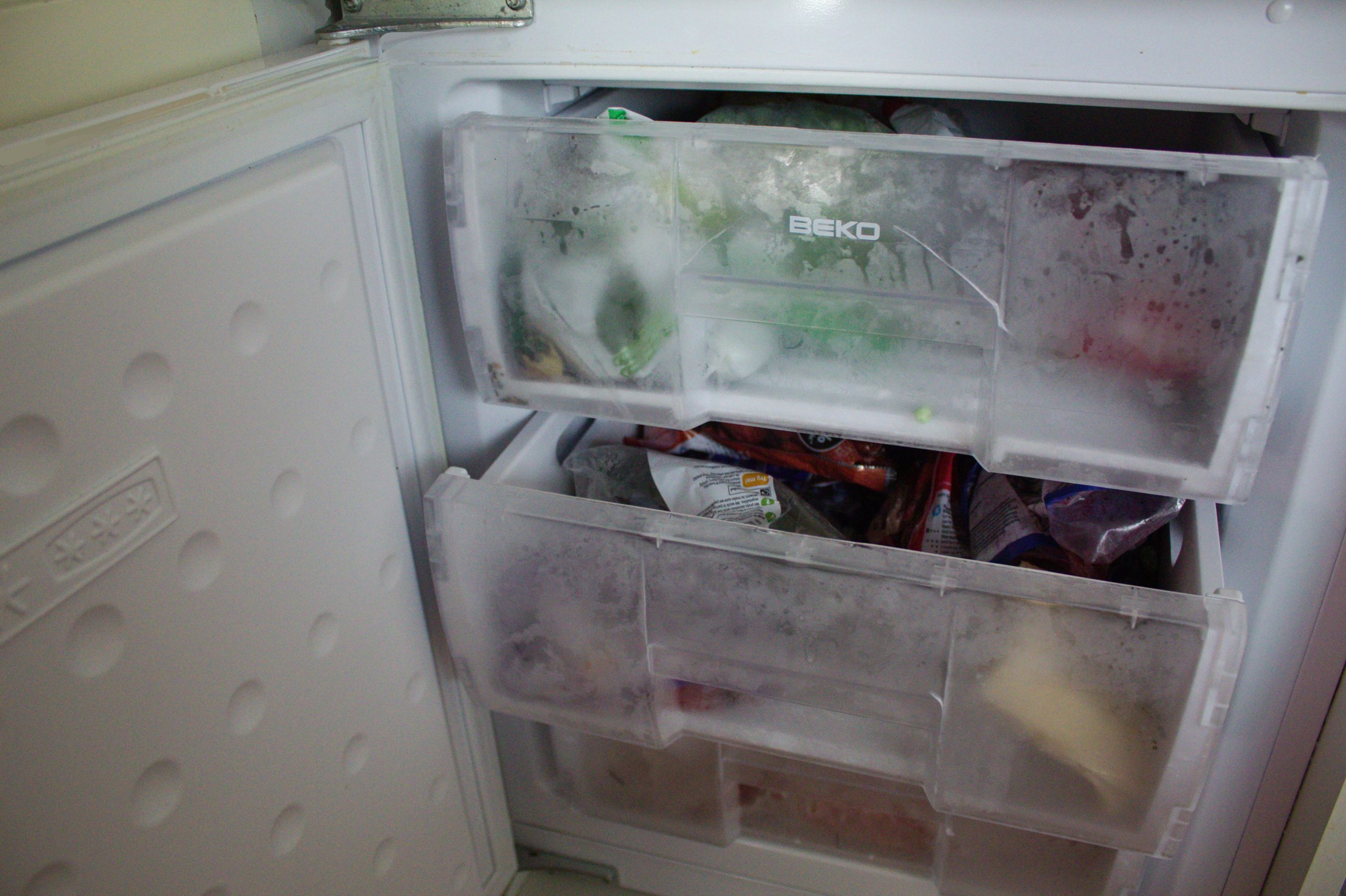If you live a busy lifestyle, are cooking for one, or just don’t want to cook a meal from scratch every night, freezing food is a must. The bliss of being able to lift a full homemade meal out of the freezer, ready to be thawed and heated, is a game changer. Along with the store cupboard, the freezer is a key area of your kitchen for easy home cooking, and prevents the temptation of expensive ready meals and takeouts when you’re tight on time.
Although freezer space can be limited, freezing is also a great way to prevent food waste, an issue that matters a lot to me, and I know to many others. When we freeze food, it acts like a pause button, giving a little more time’s grace to eat the food you bought before it goes off. This is because freezing stops or slows down the growth of bacteria that can cause food spoilage. Food waste in the UK is a significant problem, which has very real consequences for the planet and our bank accounts. Approximately 70% of food that’s thrown out in the average UK household is edible food (not egg shells, bones etc), and this excess waste can amount to around £60 a month (£700 a year). It also means that so much more food is produced than eaten, limiting how much of that food can go around and contributing towards food poverty for many. Of course, there are many ways we need to go about tackling food waste, but your freezer is definitely one key tool.
However, we’ve definitely all experienced some mishaps; a freezer overflowing with mystery meals made from who knows what and who knows when. It’s also worth noting that although freezing hinders the multiplication of microorganisms, it doesn’t actually kill or remove bacteria. Therefore, to make the most out of freezing, it’s important to be aware of good hygiene practices, and keep organised.
It can be challenging to know the ins-and-outs of freezing rules – what can and can’t be frozen, how to safely freeze, and how long can they stay there for. So with that said, I hope this handy guide will help you navigate the switch a bit easier!
Food Safety & Hygiene Principles for Home Freezing
- It’s safe to freeze food right up to the use-by date, but not afterwards. This goes back to the above point about freezing not actually killing bacteria already present.
- Make note of the measurements of your freezer in cubic feet – freeze no more than 2-3bs of food per cubic foot (or 1-1.5kg per 30 litres) at one time, as this can overload the freezer and bring up it’s temperature.
- Although glass containers can be an attractive option for those avoiding plastic, avoid freeze food in glass containers as the extreme temperatures can cause the glass to shatter. Some glass containers are specifically made to be freezer-safe, so if you’re set on glass containers, look out for these.
- For foods that have been bought frozen, get these into the freezer ASAP once you get home. This avoids the food thawing or partially thawing, which would allow bacteria to re-grow. For foods bought fresh (not frozen), try to freeze it sooner rather than later – so as soon as you get home from the shop, or as soon as you realise you aren’t going to be able to eat it in time.
- If you’re freezing cooked food, allow it to reach room temperature before freezing to prevent partially defrosting foods adjacent. Freeze ASAP once fully cooled.
- To safely thaw food:
- Ideally, defrost over 24 hours in the fridge. This is especially important for high-risk foods, such as meat. Bread can be toasted straight from the freezer.
- Once thawed, use within one day and only reheat foods once.
- Once thawed, do not re-freeze. However, you can freeze cooked meat that was frozen when raw (but not cooked meat twice, or raw meat twice).
- If food has started to partially thaw, even if unintentionally, this should be removed from the freezer. Follow the above rules for safe defrosting and use.
- Extra caution should be taken with rice, as this is actually considered a high-risk food. Rice should be cooled and frozen as quickly as possible to limit risk. Do this by removing from the hot pan and transferring into the container you want to freeze the rice in. Place the container in cold water to reduce cooling time. As soon as cooled, place the lid on top, label, and place in the freezer. To defrost, do so overnight in the fridge and eat within 24 hours. Make sure rice is piping hot before serving.
How To Get the Most Out of Freezing
- Keep your freezer properly stocked – a well-stocked freezer is cheaper to run than one half-empty because the foods can help keep each other frozen. However, ensure that it is not so packed that air can’t circulate effectively.
- Follow the First In, First Out principle where possible.
- Labelling, labelling, labelling – this is a MUST, and one I need to get better at. Label everything placed in the freezer that doesn’t already come with labelled packaging with what the food is, when it was placed in the freezer, and when it should be used by. Colour-coding can also be useful. To be extra organised, have a record near your freezer so you know exactly what’s in your freezer at any one time.
- Make sure everything is wrapped in a sealable container or bag to reduce air exposure. This is important to prevent “freezer burn”, which can impact colour and texture. Meat in particular needs to be properly wrapped.
Additional Useful Tips
- Freeze meatballs, berries, peach slices, cherries, melon slices, or cookies in a single layer on a baking sheet first, then place frozen pieces in bags for long-term storage. This way, they will freeze more quickly and won’t stick together.
- Freezing food in freezer bags often takes up less space compared to clunky boxes, and means you aren’t using up precious tupperware! If you want to try this, PLEASE consider purchasing re-useable silicone bags instead of single use ziplock bags, or else wash and re-use where possible. This works particularly well for stews, curries, soups etc. Pour into the bag, lay flat on a baking tray and place in the freezer. Once frozen, remove the baking tray. The frozen bags can now easily be stacked on top of each other.
- Ice cube trays are useful for more than just ice – blend herbs with some olive oil, freeze in ice cube trays and use as needed for cooking (the oil helps retain flavour). These can also be used to freeze single portions of tomato puree, stock or chilli/curry paste.
- Freeze in single portions unless you know you’ll use the whole batch in one go (e.g. if you have a large family or were freezing a casserole ahead of time for an event). This makes it easier to defrost and reheat, and since batches should be used within 24 hours once thawed, this also helps prevent food waste.
- Throughout the week, keep off-cuts of vegetables (celery and leek ends, mushroom stalks, herb stalks etc) in a bag and freeze for making into a stock at a later time.
What Can I Freeze?
Many people limit their freezers for foods like meat and foods already bought frozen from the supermarket. But you would be surprised at the amount of foods that can be frozen safely.
| SUITABLE FOR HOME FREEZING | UNSUITABLE FOR HOME FREEZING. Most foods in this list can be frozen safely, however, there may be textural/quality changes that may affect how you intend to use them after freezing. |
| Cooked rice or pasta. Uncooked potatoes don’t freeze well, but simply par-boil for 5 mins. Pre-cooked potatoes can be frozen, including buttery mash, which freezes well. |
Food with a high water content, such as salad leaves or crisp raw veg for use in salads or sandwiches (cucumbers, tomatoes, peppers, lettuce, courgettes) – freezing will affect crispness. Most fruits have a high water content, so will go mushy once thawed. They, however, are great for cooking or eaten while still frozen (frozen berries are fab in yoghurt or in porridge, and frozen grapes are a top tier snack). |
| Nuts – nuts are considered to have a long shelf-life, but because of their high fat content, nuts can actually go rancid if kept at room temperature for long periods of time. | Eggs still in their shell (they will crack). Egg yolks can be frozen for use in baking or as an egg wash, but won’t work for all recipes. Frozen egg whites tend to go rubbery. |
| Flour – this can often be used straight from the freezer. | Most soft cheeses, including creamed cottage cheese, such as camembert, brie and cream cheese – these tend to go grainy. |
| Butter, grated cheese. Grated cheese can be used straight out of the freezer for casseroles etc. | Whipping cream, with the intention to whip post-freezing. Whipping cream can be frozen safely, but it will not whip once it’s been frozen. Any other uses for whipping and other creams are fine after freezing, but if possible, slightly whisk beforehand as this helps stabilise and reduce risk of separation. |
| Bread (sliced, loaves, breadcrumbs). Tip: tap sliced bread on the counter a few times before freezing to separate the slices before freezing. Frozen sliced bread can be used straight out of the freezer for toast. | Sour cream – again this depends on intended use after freezing, but it can separate after freezing so is best only used for cooking. |
| Fruit for use in smoothies/crumbles, including peeled bananas. Lemons, limes and oranges can be frozen whole and zested before fully thawed. Alternatively, the zest can be frozen in a container or ice cube tray. Tip: to freeze apples or pears, cook them first and sprinkle with a small amount of lemon juice to prevent browning. | Hard cheeses (for uses other than cooking) – there are different opinions, but typically these would be best used only for cooked dishes. Some cheese, like Parmesan, can be kept for a long time in the fridge, so freezing likely isn’t all that necessary. Grated cheese works well. |
| Veg for use in cooking. Tip: blanching (boiling for 2-3 mins) before freezing helps retain colour and texture. Peppers and onions can be blanched or unblanched. | Milk can separate or become lumpy once thawed. Giving it a good shake can help fix any separation, and otherwise is generally useable for cooking. If you do need to freeze milk, do so ASAP after buying, but first pour a small amount into another container or in a cup of tea to allow for the expansion that will occur during freezing. Alternatively, milk can be frozen in ice cube trays for use in tea and coffee when needed. |
| Raw or cooked meat. As with all things, do not thaw and refreeze raw or cooked meat. However, you CAN thaw raw meat, cook it, and then freeze it in cooked form. | |
| Misc: Herbs, stock, wine. All these can be frozen in a variety of ways, but one of the easiest ways is in an ice cube tray. Use a cube of herbs or stock as needed, or a frozen wine cube to cool down wine without diluting it! |



